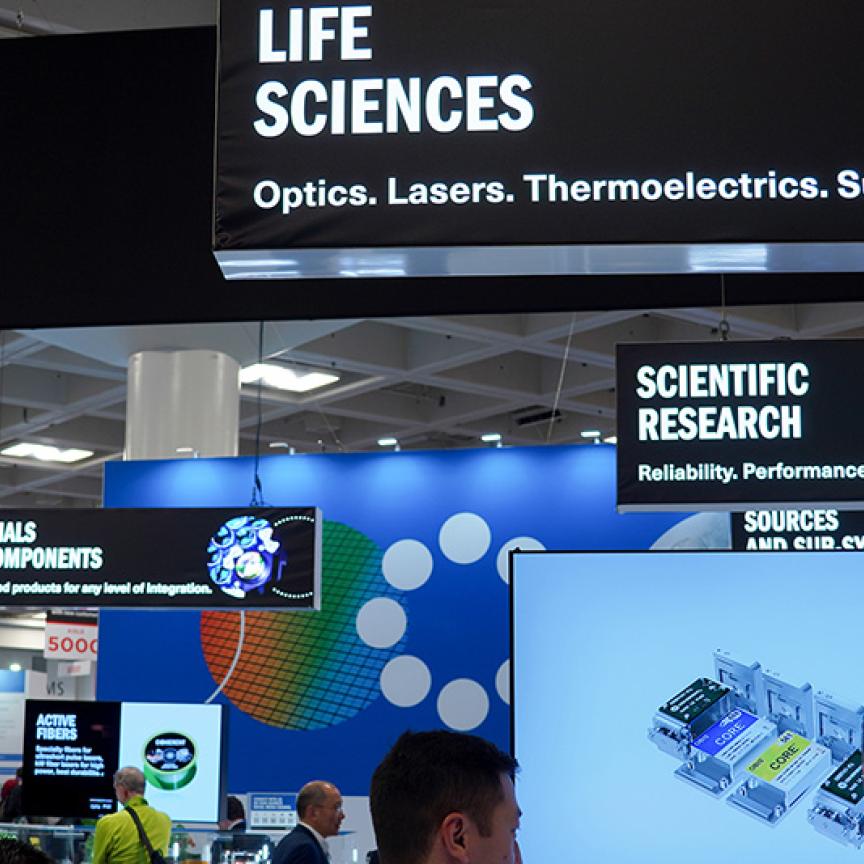Electro Optics turns 50 in 2018. To mark the occasion, experts across industry and academia review the current state of the photonics industry and highlight what needs to happen for the field to prosper over the next five decades.
Growth in the biophotonics sector requires rapid translation of innovations into the clinic, write Professor Jürgen Popp and Dr Thomas Mayerhöfer
Biophotonics is both a vibrant research field on the rise as well as a fast growing market with double-digit growth rates. In order to ensure that biophotonics continues to grow strongly in the future, it is necessary to understand the traits that are specific to the field. First of all, as it is an extremely broad and diverse field, it is important to realise its short-, mid- and long-term goals.
In the long term, biophotonics methods and technologies aim to decipher the cell functions and the ‘language’ cells use to communicate with each other. Of course, this is not a mere academic exercise! On the contrary, this knowledge will allow us to detect diseases and initiate countermeasures far before their outbreak. To achieve this long-term goal, long-term and continuous funding is necessary. It is obvious that such funding is not easy to maintain, in particular as funding is also subjected to certain trends and, certainly, funding agencies have to justify how the money from taxpayers is spent. Luckily, biophotonics offers many benefits at earlier stages.
One fast-emerging sector where biophotonics is already able to contribute, and will continue to do so also in the medium term, is ‘theranostics’, which could also be termed precision medicine. The goal of theranostics is to intermesh diagnostics and therapy to give a precise dose in treatment, be it in surgery or the administration of a drug. In the case of surgery, in particular in cancer treatment, merging different biophotonics techniques allows imaging tissues label-free – for example, Raman-, fluorescence-, and optical coherence tomography-based methods – which holds great promise. Such a combination can be used to guide the surgeons on-the-fly and in real time and let them know precisely where to cut in order to excise malignant tissue.
Sepsis – and infectious diseases in general – is another medical speciality where biophotonics will help to enable precision medicine by a fast and precise determination of the pathogen and potential resistances against antibiotics, the correct dose of which will also be identified and controlled by photonic point-of-care methods.
To achieve these medium term goals, however, it is a requirement that we all do our homework. This homework consists of ensuring that all the biophotonics technologies and methods able to cure patients and improve their quality of life make it quickly into clinics. Here, we have an enormous backlog caused by firstly the gap between basic and applied research, and secondly development of a prototype into a product. Further obstacles include obtaining FDA approval, as well as acceptance by the health insurance companies and the public healthcare providers. To bridge these gaps, funding is usually not available.
To remove the corresponding hurdles and the backlog is therefore of utmost importance, not only to let biophotonics prosper, both as a research field and a market, but also to remove burden from the patients and society as a whole.
- Professor Jürgen Popp is director of Physical Chemistry at the Friedrich-Schiller University Jena, and is the scientific director of the Leibniz Institute of Photonic Technology (IPHT), also based in Jena. Thomas Mayerhöfer is a senior researcher, also at the Leibniz IPHT

